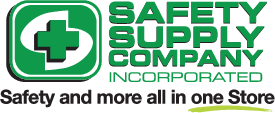Ergonomic Safety-Are You Practicing It Within Your Workplace?

Ergonomic Safety. It sounds like an intimidating term, however, at its core, it’s basic safety considerations for any workplace.
Before we dive into breaking down this term, let me ask you, have you ever considered the following questions in relation to your employees’ working environment?
- Are employees sitting in chairs which are at an appropriate height for their hands to reach their desk without placing strain on their wrists, forearms or shoulders?
- Did employees receive training on the proper ways to lift and carry heavy objects within their job?
- Are employees working with equipment that is comfortable to use and appropriate for the job?
If yes, well done! These are basic, preliminary questions which all have to deal with Ergonomic Safety within the workplace and if you haven’t considered the above or similar questions before, maybe it’s time to do so.
What is Ergonomic Safety?
According to OSHA, it is the science of fitting workplace conditions and job demands to the capabilities of the working population. It encompasses best practices for the environment, the equipment used, and the processes to be followed.
Why is Ergonomic Safety important?
This type of safety focuses on reducing risks to the health and well-being of any employee which can develop over long term interaction with uncomfortable and unsuitable work environments.
One of the major risks to health and well-being would be Musculoskeletal Disorders (MSDs). Regardless of whichever industry you are in, there is always a risk of being afflicted by Musculoskeletal Disorders as these disorders can affect the muscles, nerves, blood vessels, ligaments and tendons.
Office workers can acquire MSDs due to their sedentary lifestyle, while workers with physically demanding jobs can be afflicted with MSDs due to the strain their body undergoes to perform on the job.
Some of the conditions which can be developed are:
- Carpal Tunnel Syndrome.
- Tendonitis.
- Muscle / Tendon strain.
- Ligament Sprain.
- Tension Neck Syndrome.
- Thoracic Outlet Compression.
- Rotator Cuff Tendonitis.
Proper implementation of ergonomic safety measures reduces the risk of being afflicted with a MSD, increases productivity, and assists with employee satisfaction and retention.
How can you implement Ergonomic Safety within your organization?
Companies which have focused on ergonomic safety have reported decreases in absenteeism, reductions in compensation pay, increased quality of work, production and more. This was attributed to a model of implementation which involved employee buy-in on what would make their work environment or their jobs easier to produce the best results.
Ergonomic safety can be practiced within any working environment including offices, warehouses, kitchens, factories, construction sites, etc.
Here are some tips and resources to help you create an ergonomically safe environment for your workplace which would benefit both the company and the employees.
- Firstly, it requires a conversation between management and the employees working the job to ascertain if there are any challenges regarding effectively and safely carrying out their various tasks. This conversation should cover how comfortable the employees are within their work environment, if the tools are adequate for the job and if there are any potential health or safety challenges which can be foreseen and dealt with before becoming major issues.
- Develop a safety plan which can include the following:
- Management commitment
- Labour and management accountability
- Employee involvement
- Hazard identification and control
- Accident investigation
- Employee training
- Some areas of consideration for ergonomic safety focus could include:
- For office workers:
- Adequate breaks away from the computer and sitting
- Appropriate height to reduce pressure on joints and back
- Good air quality indoors
- Ample space for everyone within the office to operate
- Proper lunch/break room
- For office workers:
- For production workers:
- Proper training in their area/for lifting/ for safety measures
- Correct and suitable tools to get the job done
- An appropriate amount of breaks
- Workstations at an appropriate height
- Suitable safety equipment
- Establish set protocols for reporting, hazard control, monitoring and evaluation
- Create, support, and maintain safety committees within the workplace, comprising of both management and employee representatives to manage the safety, health, and well-being of the workplace.
Check out these additional resources here, here, and here, which can help develop an ergonomic safety mindset within your organization:
Visit Safety Supply Co. at www.safetysupplyco.com to find safety equipment which can help you to create a safe and comfortable workplace for all.
Blog Articles
Check out more articles
Why You Should Service Your Safety Equipment
Safety equipment serves as the frontline defense against workplace hazards, ensuring the well-being of employees and minimizing risks.
View MoreExciting News: We’re transitioning to OBL Barbados Distribution Ltd.
We hope this letter finds you well. We are writing to share an important update about our business that will bring positive changes and enhanced offerings to you.
View MoreBright Lights, Safe Nights: Holiday Fire Prevention Guide
The holiday season is a time of joy and togetherness, often accompanied by decorations, festive lights, and celebratory gatherings.
View More



